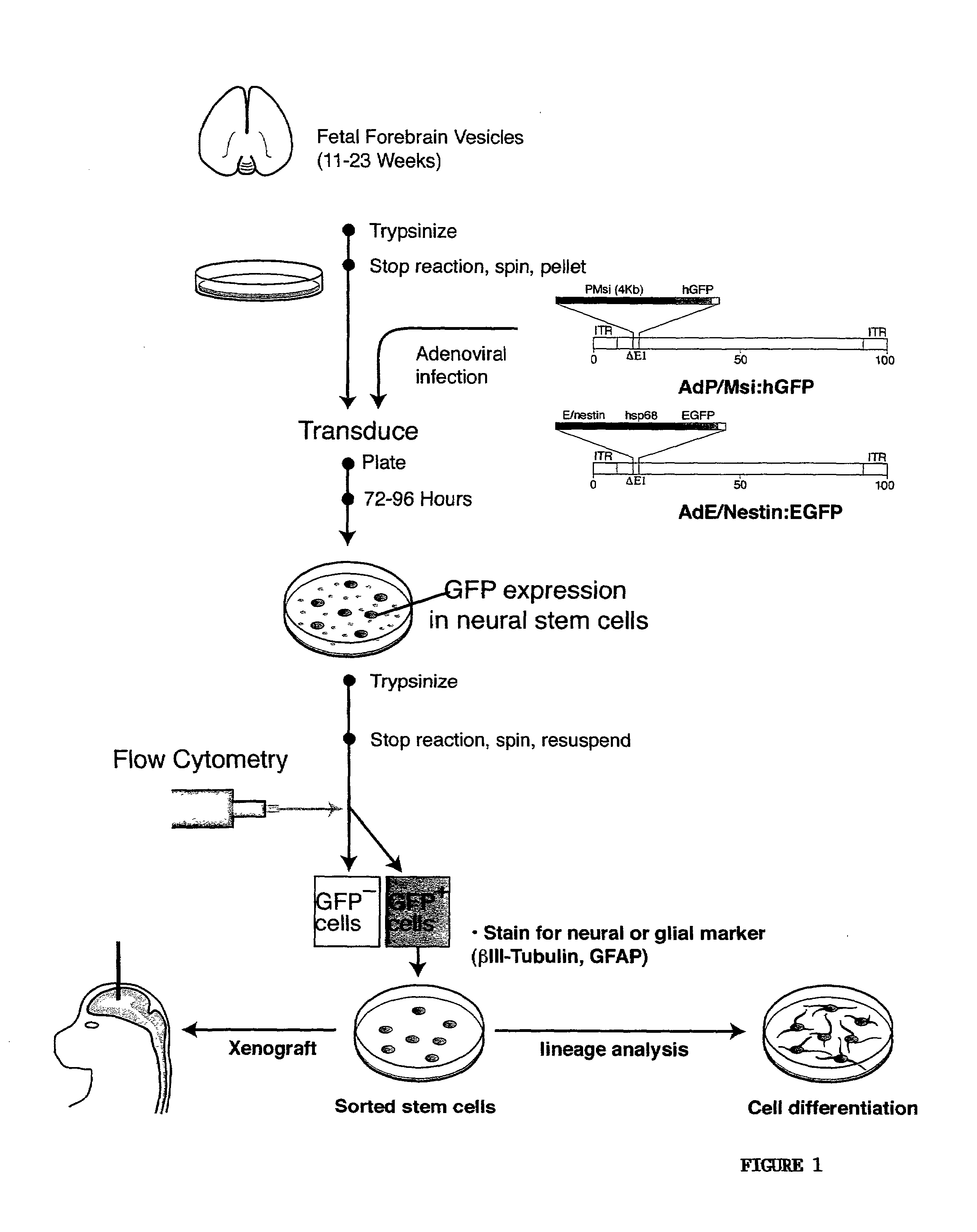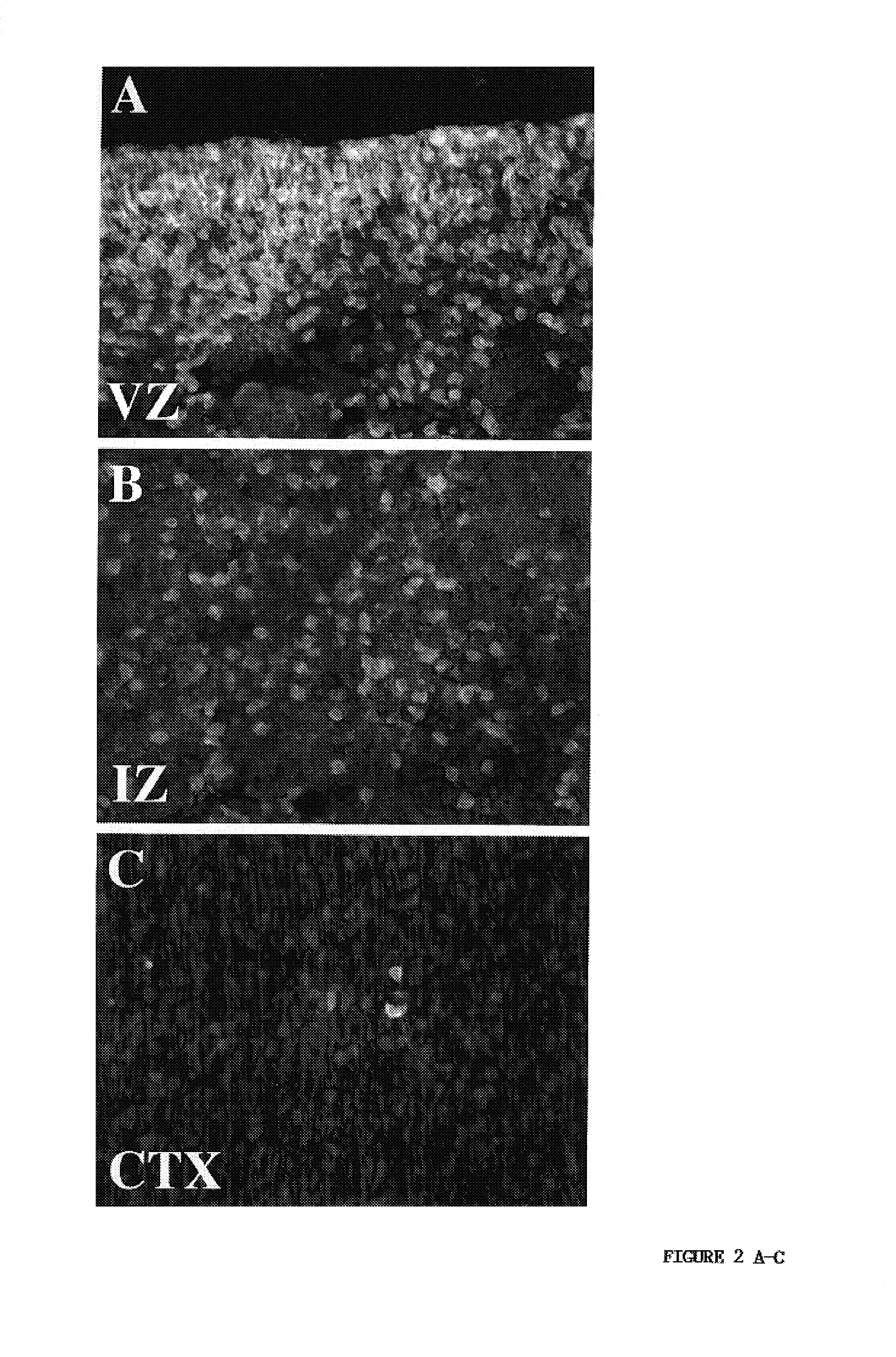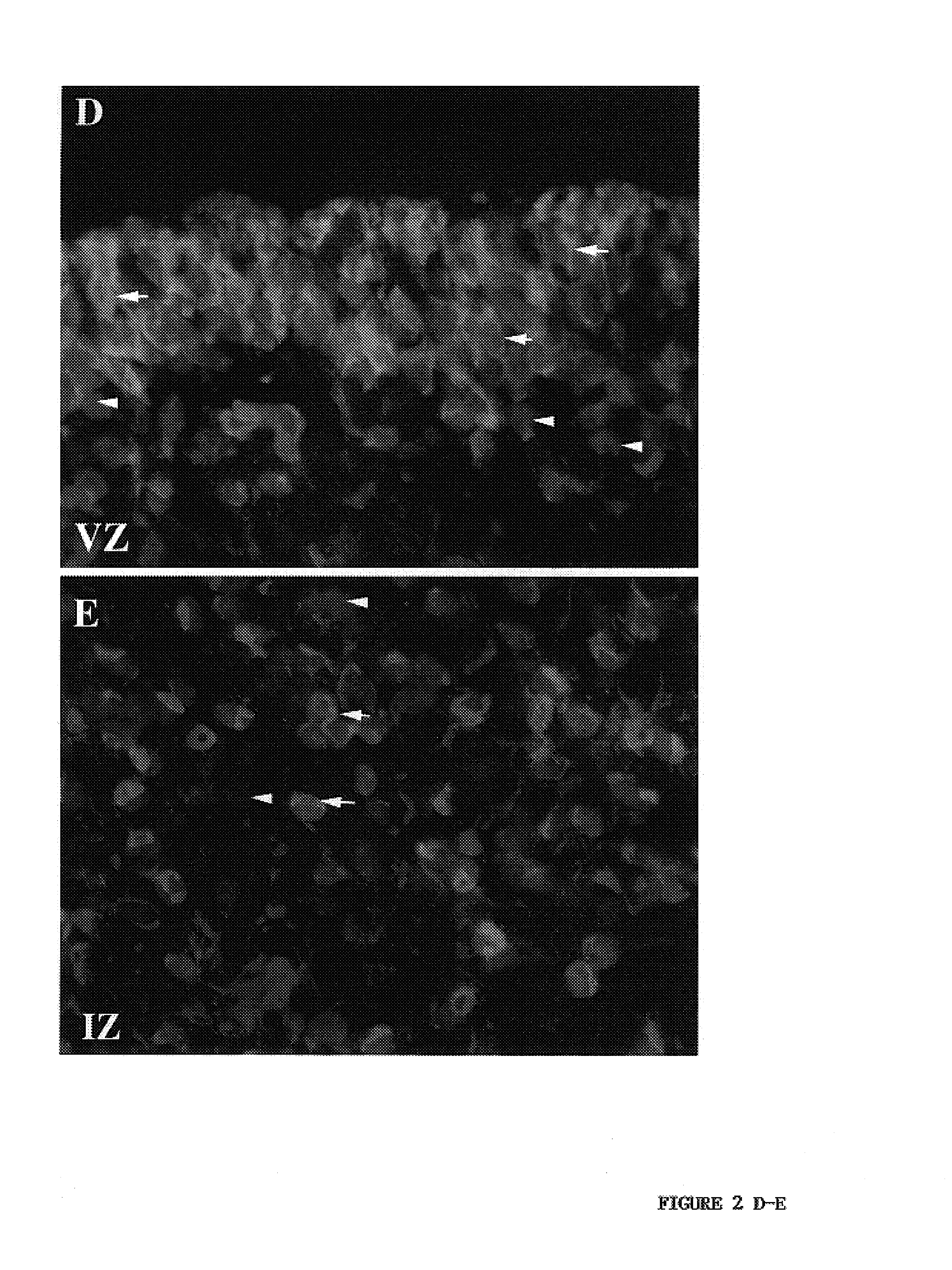Enriched preparation of human fetal multipotential neural stem cells
a neural stem cell and human embryo technology, applied in the field of multipotential neural progenitor cells, can solve the problems of the inability of the damaged brain to function significantly structural self-repair, the relative scarcity of adult brain tissue, and the failure of the mature brain to generate new neurons
- Summary
- Abstract
- Description
- Claims
- Application Information
AI Technical Summary
Benefits of technology
Problems solved by technology
Method used
Image
Examples
example 1
Materials and Methods
Human Fetal Culture
[0054]Human fetal brain was taken at second trimester therapeutic abortion, typically performed for either placenta previa, premature rupture, sonographically-demonstrated isolated splanchnic or cardiac developmental abnormalities, or karyotypically-identified trisomies 18 or 21. These brains were collected into Ca / Mg-free Hanks' Balanced Salt Solution (HBSS), then dissected to separate first the telencephalon from the brainstem, and then the telencephalic ventricular epithelium from non-ventricular parenchyma. The telencephalic ventricular zone was then cut into small pieces in PIPES solution (120 mM NaCl, 5 mM KCl, 25 mM glucose, 20 mM PIPES), then digested with papain (11.4 units / ml papain, Worthington Biochemical Corporation) and DNase I (10 units / ml, Sigma, St. Louis, Mich.) in PIPES solution, with gentle shaking for 1 hour at 37° C. in 5% CO2. Following incubation, the tissue was collected by centrifuging at 200 g for 5 minutes in an IEC...
example 2
Musashi and Nestin Protein Expression Characterize Distinct but Overlapping Domains within the Fetal Human Ventricular Zone
[0069]Immunostaining for nestin and musashi proteins at several stages in mid-gestation revealed that these early neural proteins occupied distinct but overlapping domains within the fetal human telencephalic wall. At gestational ages spanning from 12-21 weeks of second trimester development, musashi protein was expressed ubiquitously within the densely packed ventricular neuroepithelium, with diminished expression within the nascent subventricular zone, and virtually none within the intermediate zone and cortical parenchyma (FIG. 2A-E). Nestin expression was similarly noted within the ventricular zone, and many double-labeled cells were noted therein. However, the density of nestin+ cells within the VZ was notably lower than that of musashi+ cells, and many musashi+ VZ cells did not express detectable nestin. In contrast, within the subventricular zone, many ne...
example 3
The Nestin Enhancer Targeted GFP Expression to Neural Progenitor Cells In Vitro
[0072]In order to label live neural progenitor cells in which nestin and musashi regulatory elements were transcriptionally active, cells derived from fetal VZ samples spanning 14-23 weeks of gestational age were infected with adenoviruses bearing EGFP under the regulatory control of either the nestin enhancer (E / nestin:EGFP) or musashi promoter (P / musashi:hGFP) (FIG. 9A-D). To this end, papain dissociates of the dissected ventricular walls were obtained from 25 fetuses; these included 9 of 14-19 weeks gestational age, and 16 of 20-23 weeks gestation. These dissociates were then prepared as suspension cultures in DMEM / F12 / N2, supplemented with 20 ng / ml FGF2; some were also supplemented with 2% PD-FBS.
[0073]To both improve the efficiency with which the E / nestin:EGFP selection cassette could be introduced into these ventricular zone cells, and to increase the transgene copy number in transfectants, an adeno...
PUM
| Property | Measurement | Unit |
|---|---|---|
| Time | aaaaa | aaaaa |
| Time | aaaaa | aaaaa |
| Fluorescence | aaaaa | aaaaa |
Abstract
Description
Claims
Application Information
 Login to View More
Login to View More - R&D
- Intellectual Property
- Life Sciences
- Materials
- Tech Scout
- Unparalleled Data Quality
- Higher Quality Content
- 60% Fewer Hallucinations
Browse by: Latest US Patents, China's latest patents, Technical Efficacy Thesaurus, Application Domain, Technology Topic, Popular Technical Reports.
© 2025 PatSnap. All rights reserved.Legal|Privacy policy|Modern Slavery Act Transparency Statement|Sitemap|About US| Contact US: help@patsnap.com



